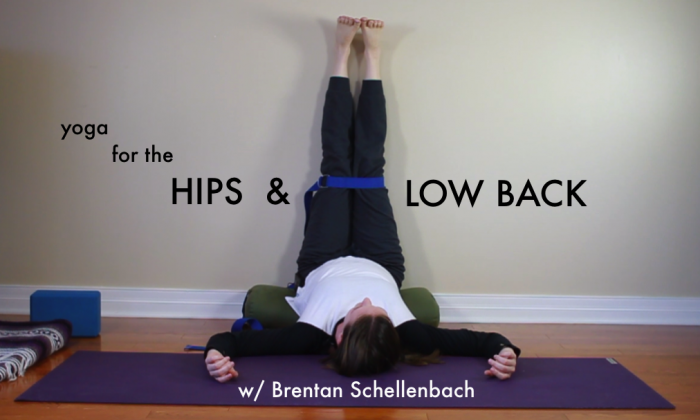We all know that a teacher can only take us so far.
For instance, Glinda, The Good, doesn’t accompany Dorothy down the yellow brick road. Hagrid only sticks around 11-year-old Harry long enough to tell him he’s a wizard and introduce him to the magic world before letting him explore school and life on his own. And while Grandpa Jo accompanies Charlie through Wonka’s entire chocolate factory adventure, it isn’t until Charlie approaches Wonka at the end of the day by himself that he shows the importance of honesty over greed and receives the grand prize.
Our guardians are important, but at some point, we must transcend them. We must out-grow our teachers to become self-sufficient as our own guardian. The purpose of guardians is to introduce the adventurer to the rules of the new world, and then get out of the way quick so the hero can experience their trials and tribulations on their own.
And this is why there is no greater feeling for me as a yoga teacher than the feeling I get when one of my students completely stops paying attention to me.
That may sound weird, or totally beside the point of students choosing to take class with me, but it’s kind of my goal as a teacher. I’ve always felt uncomfortable giving students commands, and have never quite embraced the authority of telling people to do something just because I say so. Even when I call out a bunch of options, it never quite feels plugged in to the intelligence of what they’re going through, it just seems like I’ve memorized a bunch of movement scenarios, and am operating on the “trust” that students know how to read their experience with enough accuracy to box themselves into the right group of poses.
And what makes me an authority on your movement, anyway?
My only authority is that I practice yoga with a deep and vibrant love for it. But that doesn’t mean that I know how you feel in your body, or which parts of your body you’re aware and unaware of, or the precise relationships of your muscles as they move your skeleton. Heck, I’m still in the process of learning about my own body!
Therefor, my process of learning is the only intelligence I have whatsoever.
And this intelligence tells me that the best contribution I can make to my students is to empower their practice without me. To do this, I must share my own practice, which means giving freely the vocabulary and methods that help me understand the messaging of my mind and body. When there is understanding, there is clarity and growth, alignment and self-reliance, peace and sustainability. This is actually the only thing I feel is worth sharing with my students because the rewards are so rich and everlasting.
Therefor, my ultimate goal as a yoga guardian is to see students stop paying attention to me because they’ve finally figured out how to pay attention to themselves.
The joy (and sometimes the rub) of teaching is figuring out exactly how to do this, because our bodies are wild, and nuanced and vastly distinct.
There is a particular joy (or rub) when it comes to complicated parts of the body, like the hips, which have 22 muscles stretching over, across and through their terrain. Or the spine, whose four curves are often put uniquely out of natural shape by our daily habits. Or the mind, which is so eager to name, judge and classify our experiences based on conditioned patterns and responses, with absolutely no regard for reality.
The complexities of these areas are mysterious terrain for a lot of students, which makes it all the more worthwhile to venture into these dark lands with an experienced teacher. Perhaps this mystery is resolved with a threshold guardian, a “Glinda” so to speak, who can help students understand the vocabulary and messaging of these body areas. Perhaps the hips, spine and mind are simply looking for a Hagrid for a proper introduction, or a Grandpa Jo for a lesson in caution (and when to throw caution to the wind for a sip of fizzy lifting drink).
And this is what a yoga guardian is perfect for—without an experienced teacher showing the joys and cautions of these areas, a student might be susceptible to injury, confusion or discouragement. After all, it’s possible for Dorothy to have wandered down the red brick road; Harry could have been snuffed up into the elite snobbery of the post-Slytherin crowd; Charlie might have joined slurping Augustus at the edge of the chocolate river and found himself sucked through the PVC pipes into the fudge room. But they had guardians of pure intent, who gently nudged them into correct alignment when their paths got foggy.
And while I may not be the right guardian for everyone or even for most, I know my intent is pure by the sheer giddiness I feel when a student starts to get it without me. So if you find yourself on the precipice of your journey into the hips and spine and you’re looking to be nudged in the right direction, find your guardian. Find the guardian who helps you get it. Find the guardian who nurtures your curiosity and enthusiasm, and then lets you be alone in your love affair with your practice.
And when the path gets foggy—because it can and it will—we can call upon our guardians to keep us humble and intelligent.
As for the hips, spine and mind—there are infinite ways to understand and explain their complexities. There are certain aspects of their form and function that are universal, and certain aspects that are unique to every person. There are muscles, joints, bones, connective tissues, and skeletal proportions co-mingling, intersecting, and striving for independence. If you are “in the market” for a guardian of your own, here is an at-home practice that may clear the fog from the path and let you journey safely onward into the unknown.
But ultimately, no matter how much guidance you seek, remember that you are the one who has the ruby slippers, the wand and the ever-lasting gobstopper—no one else.
Have fun!
More awesome from Brentan:
Crow Pose Demystified. {Video}
Opening My Own Yoga Studio: A Lesson in Playing Well with Others.
Author: Brentan Schellenbach
Editor: Renée Picard
Photo/video: author’s own
 Share on bsky
Share on bsky






Read 0 comments and reply